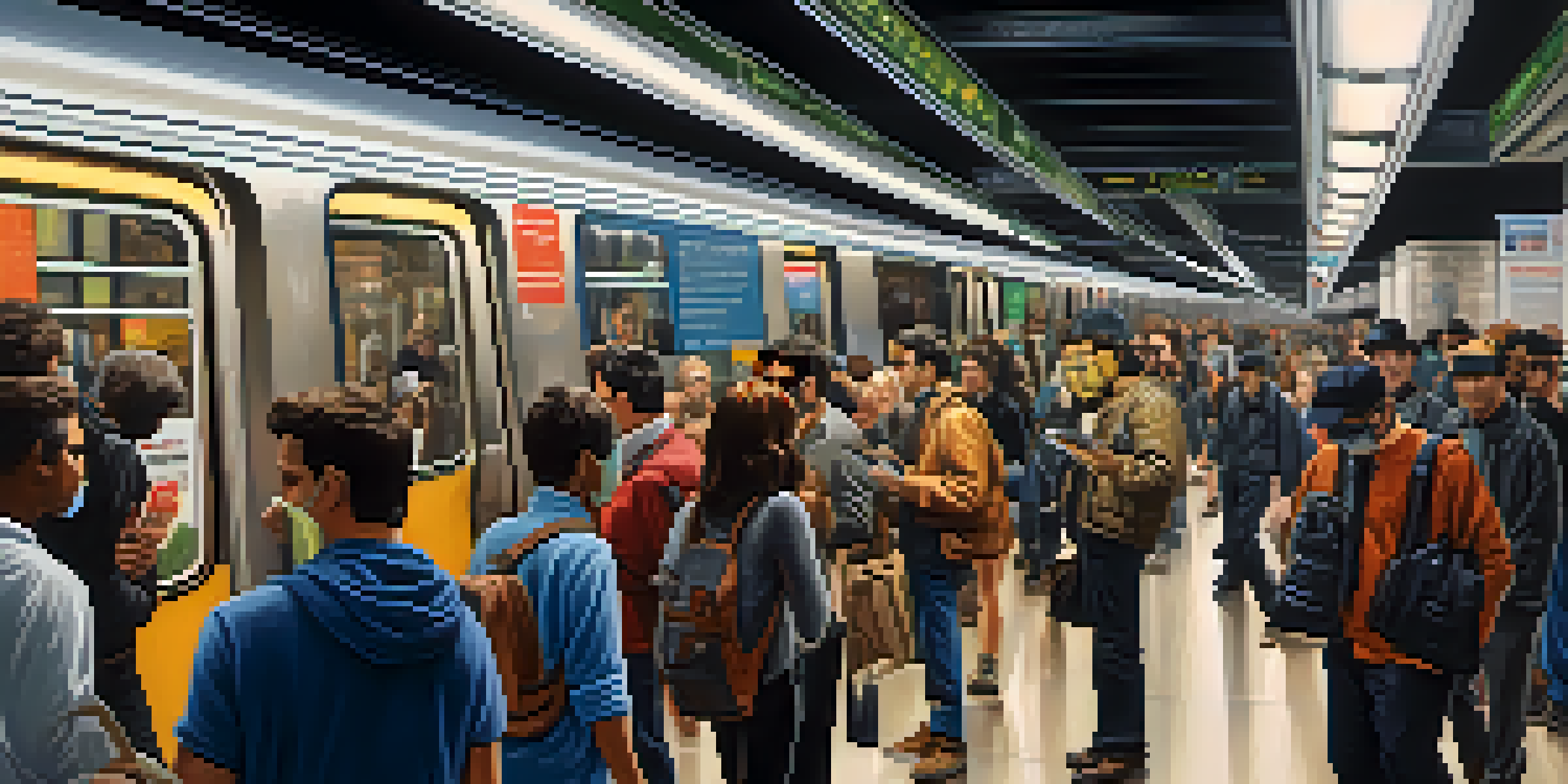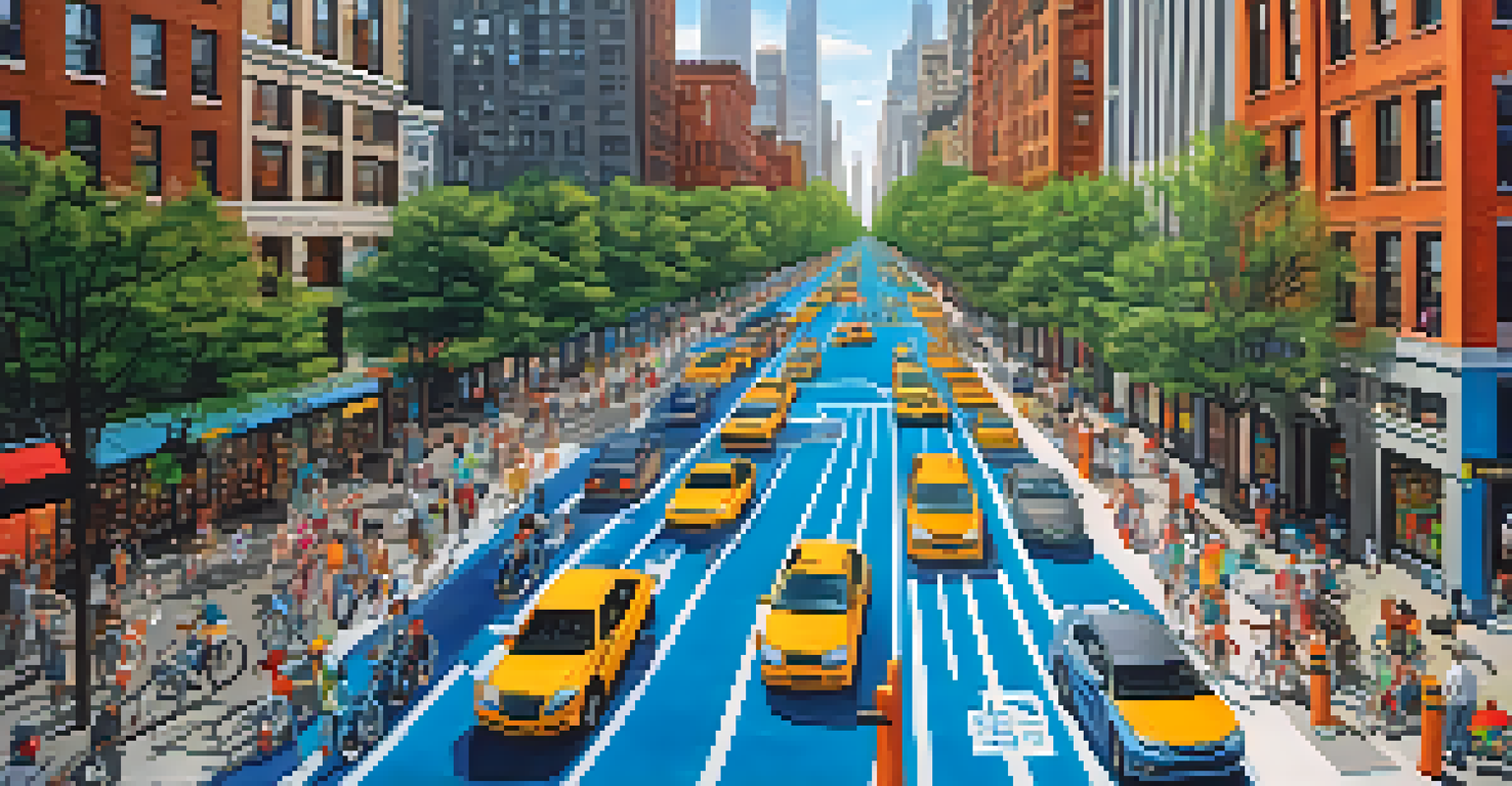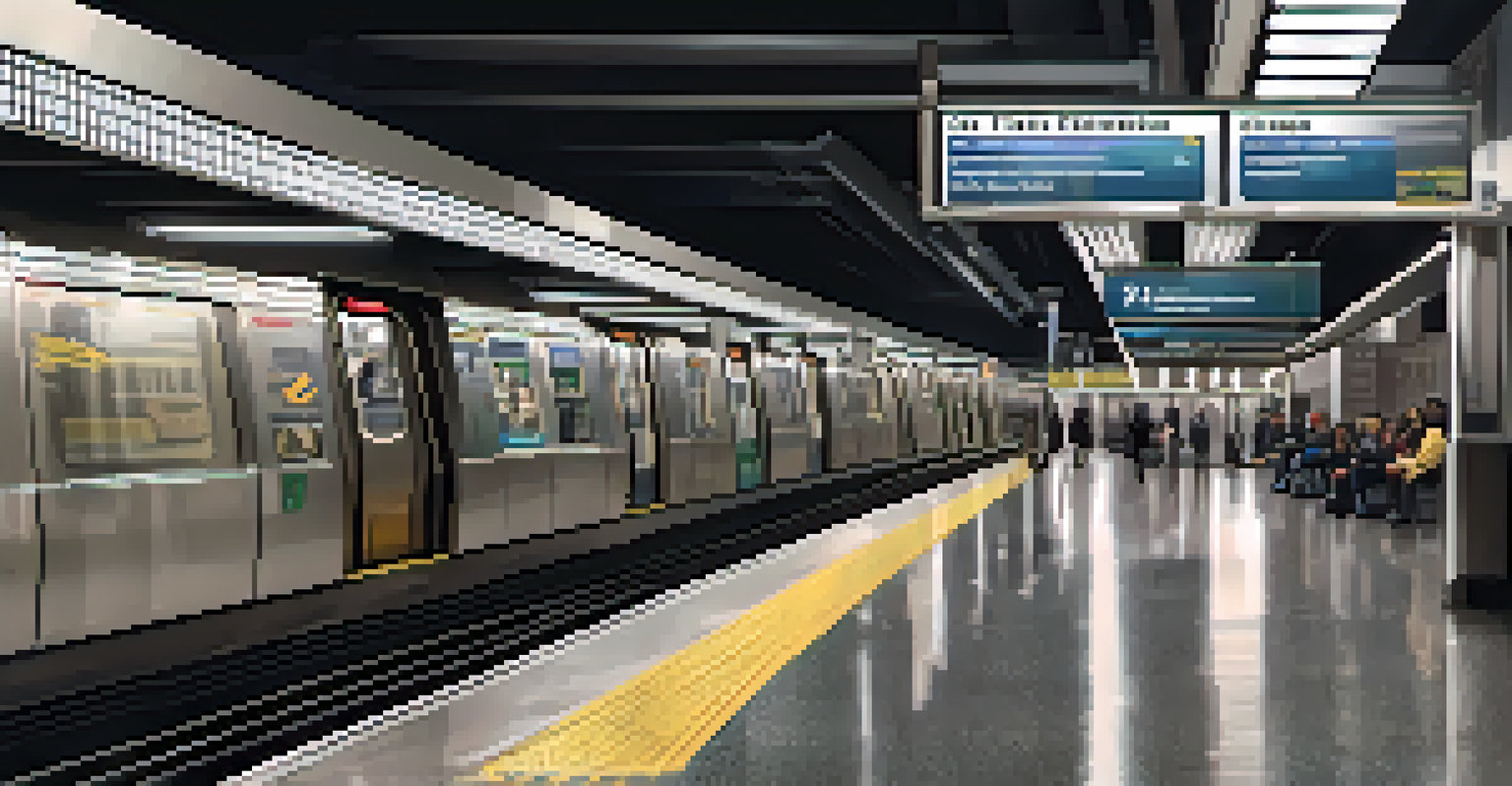Public Transportation in NYC: Changes Post-COVID-19

The Impact of COVID-19 on NYC Public Transit Systems
The COVID-19 pandemic hit New York City hard, affecting daily life and the public transportation system significantly. As ridership plummeted, transit authorities faced unprecedented challenges to maintain services while ensuring safety. This drastic drop in passengers forced a reevaluation of how services were delivered, emphasizing the need for adaptability in a crisis.
Public transportation is the backbone of our city, and we must ensure it remains safe, reliable, and accessible for all New Yorkers.
With many New Yorkers working from home, the subways and buses saw a significant decline in users. This shift led to discussions about the long-term sustainability of transit funding, as fare revenues dwindled. As a result, the Metropolitan Transportation Authority (MTA) had to implement emergency measures to keep the system running without overwhelming financial burdens.
The pandemic also highlighted the essential role public transit plays in the city’s economy and social fabric. It became clear that, to recover, the transit system needed to prioritize safety and reliability, paving the way for innovations that could redefine the future of commuting in NYC.
Health and Safety Measures Implemented
In response to health concerns, NYC's public transportation introduced numerous safety measures to protect passengers and staff. Enhanced cleaning protocols, such as frequent disinfection of high-touch areas, became standard practice to combat the spread of the virus. Additionally, the MTA installed hand sanitizer stations throughout transit hubs to encourage hygiene.

Social distancing measures were also implemented, with signs and floor markings guiding passengers to maintain space while waiting for trains or buses. This effort aimed to foster a safer commuting environment during a time of uncertainty. Furthermore, the MTA launched public awareness campaigns to educate riders about staying safe while using public transit.
Transit Adaptation Amid COVID-19
NYC's public transportation system had to quickly adapt to declining ridership and implement safety measures to ensure public trust during the pandemic.
These health measures helped to rebuild public trust in the transit system, encouraging more people to return to using subways and buses. As vaccination rates increased and the city began to reopen, these safety protocols remained crucial in reassuring riders about their well-being on public transport.
Changes to Service Frequency and Routes
To adapt to changing ridership patterns, the MTA made adjustments to service frequency and routes. Some lines saw reduced service during off-peak hours, reflecting the ongoing remote work trend. Conversely, popular routes experienced increased frequency to accommodate essential workers who relied on transit to get to their jobs.
The pandemic has taught us the importance of adaptability and innovation in public transit to meet the evolving needs of our communities.
The MTA also took the opportunity to evaluate underperforming routes and make data-driven decisions about service adjustments. This approach allowed the agency to allocate resources more effectively, ensuring that riders had access to reliable transportation during busy periods. By prioritizing essential routes, the MTA aimed to keep the city moving while being mindful of budget constraints.
These changes were not just reactive but also proactive, positioning the transit system for a more efficient future. The adjustments aimed to create a transit experience that better matched the needs of New Yorkers in a post-pandemic landscape, fostering a sense of community and accessibility.
Introduction of Contactless Payment Systems
Recognizing the need for safer and more efficient payment options, NYC's public transportation began to roll out contactless payment systems like OMNY. This technology allows riders to tap their credit or debit cards, as well as smartphones, to pay for fares, minimizing physical contact with surfaces. The initiative not only enhances safety but also streamlines the boarding process, making it quicker for everyone.
The shift to contactless payments reflects a broader trend towards digital solutions in everyday life. By reducing the reliance on cash or MetroCards, the MTA aims to modernize the travel experience for all users. This change is particularly appealing to younger generations who prefer tech-savvy solutions over traditional methods.
Emphasis on Contactless Payments
The introduction of contactless payment systems like OMNY has modernized fare collection, enhancing safety and convenience for riders.
As contactless payments gain popularity, the MTA plans to expand these options further, ensuring accessibility for all riders. The introduction of these systems highlights the agency's commitment to innovation and making public transit more user-friendly in a post-COVID world.
Promotion of Active Transportation
In light of the pandemic, there has been a renewed focus on promoting active transportation options like biking and walking in NYC. The city expanded bike lanes and pedestrian spaces to encourage healthier commuting alternatives while easing congestion on public transit. These changes not only support public health but also enhance the overall urban environment.
City officials recognized that providing safe spaces for cyclists and pedestrians could reduce the pressure on public transportation systems. Initiatives such as the Open Streets program transformed certain neighborhoods into car-free zones, allowing people to enjoy their surroundings more safely. This shift encourages a culture of active transportation that aligns with sustainability goals.
As more New Yorkers embrace biking and walking, public transit systems can focus on integrating these modes of transport, creating a more holistic approach to urban commuting. By promoting active transportation, NYC aims to foster a healthier population while also addressing traffic challenges.
Investments in Infrastructure Improvements
Despite the challenges posed by the pandemic, NYC's public transportation has seen significant investments in infrastructure improvements. The MTA has leveraged federal funding and state support to enhance facilities, upgrade signals, and maintain trains and buses. This commitment to infrastructure aims to ensure that the transit system is resilient and efficient in the long term.
Projects that were previously on the drawing board have gained momentum, with a focus on modernizing aging systems. These upgrades not only improve safety but also enhance the overall travel experience for riders. For example, renovations to subway stations include updated signage and better accessibility features, catering to a wider range of passengers.
Investments for Future Resilience
Significant investments in infrastructure improvements aim to modernize NYC's transit system, ensuring its long-term efficiency and accessibility.
Investing in infrastructure is crucial for the future of NYC's public transit. By committing to these enhancements, the MTA is working to create a system that meets the demands of a growing population while remaining adaptable to changing circumstances.
The Future of Public Transportation in NYC
Looking ahead, the future of public transportation in NYC is being shaped by lessons learned during the pandemic. The MTA is exploring innovations that could revolutionize how residents and visitors navigate the city. This includes a focus on sustainability, efficiency, and enhanced rider experiences as the city continues to recover.
As New Yorkers return to work and leisure activities, the transit system must adapt to these evolving needs. The MTA is committed to maintaining a flexible approach, allowing for adjustments in service and infrastructure based on real-time data and feedback from users. This responsiveness is key to fostering a transit system that works for everyone.

Ultimately, the goal is to create an inclusive and efficient public transportation network that meets the diverse needs of all riders. By embracing change and innovation, NYC's public transport can emerge stronger from the pandemic and become a model for other cities facing similar challenges.